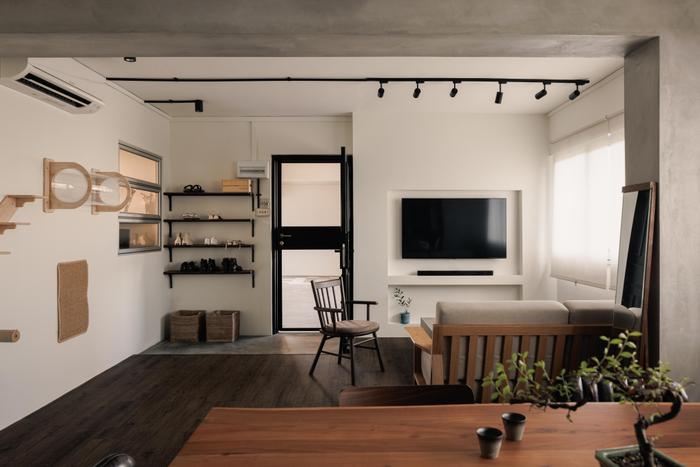As they say: preparation is the key to success.
So, you’re renovating your home. You’ve done your research and shortlisted a few interior design firms you like. Now, it’s time to finally meet them and talk about what you want for your renovation.

View this project by The Local INN.terior 新家室
Of course, you’ll want your meetings to go as efficiently as possible – so to help you get the most out of them, here’s what you can expect for your first and subsequent meetings with an interior designer (ID), as well as how you can prepare for them!
Preparing for your first meeting with an interior designer

View this project by Le Interior Affairs
The first meeting is all about you. This is when you’ll be laying out everything you want out of the renovation – like the extent of renovation works needed, aesthetic preferences, and practical requirements on your day-to-day living and moving in timelines.
It’s best to be as clear and detailed as possible, as all this information is crucial – not only does it help the ID come up with something that’s to your liking, but also to let you see if they can work within your budget and requirements.
To ensure that the meeting is a fruitful one, here’s what you can think about and prepare beforehand:
A rough renovation budget
Knowing your budget beforehand will help the designer frame the scope of your renovation. It lets them know what they can or cannot do (e.g. if your budget is on the lower side, they will not be able to do extensive carpentry works).
Tip: According to a survey we recently conducted, more than 50% of respondents ended up exceeding their initial budget. If you want to avoid doing so, consider setting aside a buffer of 10-20% for any variation orders down the road.
A moodboard showing your aesthetic and practical preferences

A sample moodboard | Project image credit: PuroMuro Studio
You don’t have to come up with detailed PowerPoint slides (although you’re free to do so). At the very least, you should have a few pictures showing:
- Homes/rooms featuring the look you’re going for;
- A colour scheme you like;
- Features you want to have (e.g. a kitchen island, a study with lots of storage space, etc.)
- Materials and patterns you’re considering (e.g. wainscoted walls, sintered stone countertops, etc.)
- Furniture pieces that you’re looking to purchase, or are bringing over from your old home
An estimated timeline to move in
Giving your ID a rough timeline will help them plan the renovation timeline, and also gauge if there is sufficient time for them to carry out the works you want.
For example, if you’re renting a house and your lease ends on the last day of August, let your ID know that you’ll need to have the house ready before then. But don’t just give yourself a few days to move in and get settled – in case of unforeseen delays, it’s better to add a buffer period of at least a month.
A list of questions to ask your ID

While the main goal of the first meeting is for your ID to find out what you want, it’s also a good opportunity for you to see if they’re the right person to work with. You can do this by asking them these key questions, and seeing how they respond.
Do also bring the following for your ID’s reference:
- A digital and printed copy of your floorplan
- Pictures of the space if it’s an existing/resale unit
Subsequent meetings with your interior designer

In the next few meetings, you’ll see how the ID interprets all the information you’ve provided in the previous one. They may come up with a moodboard if you haven’t already done one – or, if time permits, 2D (perspective) or 3D renderings – that’ll show off your ID’s vision for your home, and also give you an estimated quote for all the works needed.
This is the time for you to refine the ideas and thoughts you shared from the first meeting, as well as gauge how well the ID understood your vision for your home.
Here’s what you can expect to do:
Raise concerns and feedback

View this project by LAB73 Designers
If there’s anything your ID missed out on, or aren’t too keen on a particular feature they proposed (e.g. the colour of your backsplash, the type of door, the way your ID planned the space, etc.), this is the time to let them know.
Also, if the price you’re quoted is higher than your expected budget, it doesn’t mean that your ID isn’t listening to you. Rather, it could be that some of the works or materials you wanted cost more than you thought – so try working with your ID to see if there’s anything you can change or remove.
Other than their technical skills, you should also look out for the ‘soft’ skills – like their project management ability, the way they communicate their ideas to you, and their general personality. In fact, you can think of this as a vibe check – because these skills are must-haves for a good working relationship and a smooth-sailing renovation.
Remember: a renovation is a collaborative effort, and not a one-way street. If you feel that your ID isn’t keen on listening to your ideas, or doesn’t understand what you want, it’s best to look for someone else!
Look over your renovation contract.

Source: Pexels
Reading your renovation contract is a tedious process, but we promise – it’s a necessary step to prevent you from overpaying. This is also when you should be keeping an eye out for red flags in your contract, like the lack of clauses and vague descriptions of works.
As there’s a lot of information to take in, feel free to take some time to read it thoroughly. Your ID shouldn’t be pressuring you to sign it on the spot – if they are, run!

 Get a budget estimate before meeting IDs
Get a budget estimate before meeting IDs